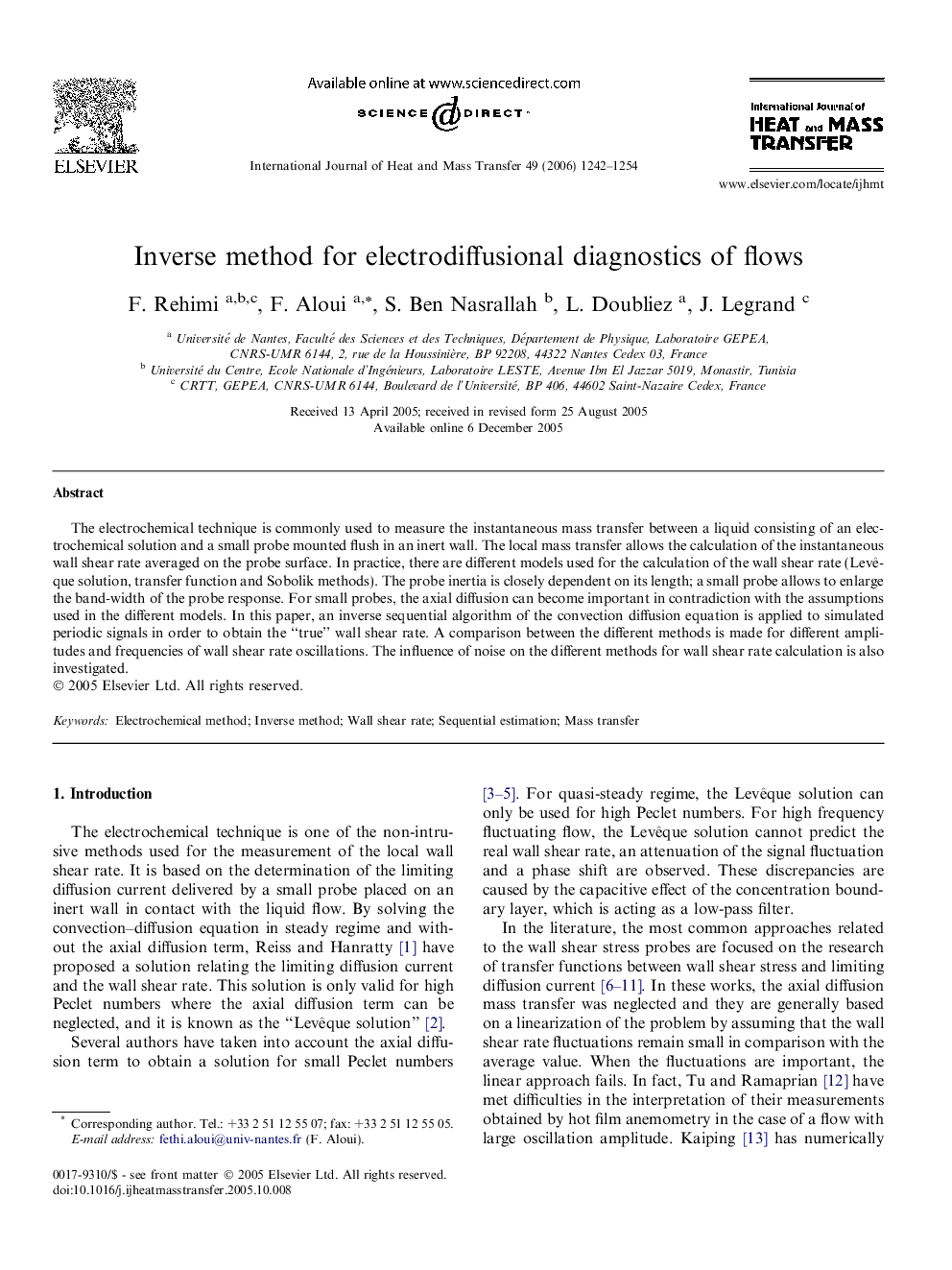| Article ID | Journal | Published Year | Pages | File Type |
|---|---|---|---|---|
| 662057 | International Journal of Heat and Mass Transfer | 2006 | 13 Pages |
The electrochemical technique is commonly used to measure the instantaneous mass transfer between a liquid consisting of an electrochemical solution and a small probe mounted flush in an inert wall. The local mass transfer allows the calculation of the instantaneous wall shear rate averaged on the probe surface. In practice, there are different models used for the calculation of the wall shear rate (Levêque solution, transfer function and Sobolik methods). The probe inertia is closely dependent on its length; a small probe allows to enlarge the band-width of the probe response. For small probes, the axial diffusion can become important in contradiction with the assumptions used in the different models. In this paper, an inverse sequential algorithm of the convection diffusion equation is applied to simulated periodic signals in order to obtain the “true” wall shear rate. A comparison between the different methods is made for different amplitudes and frequencies of wall shear rate oscillations. The influence of noise on the different methods for wall shear rate calculation is also investigated.
